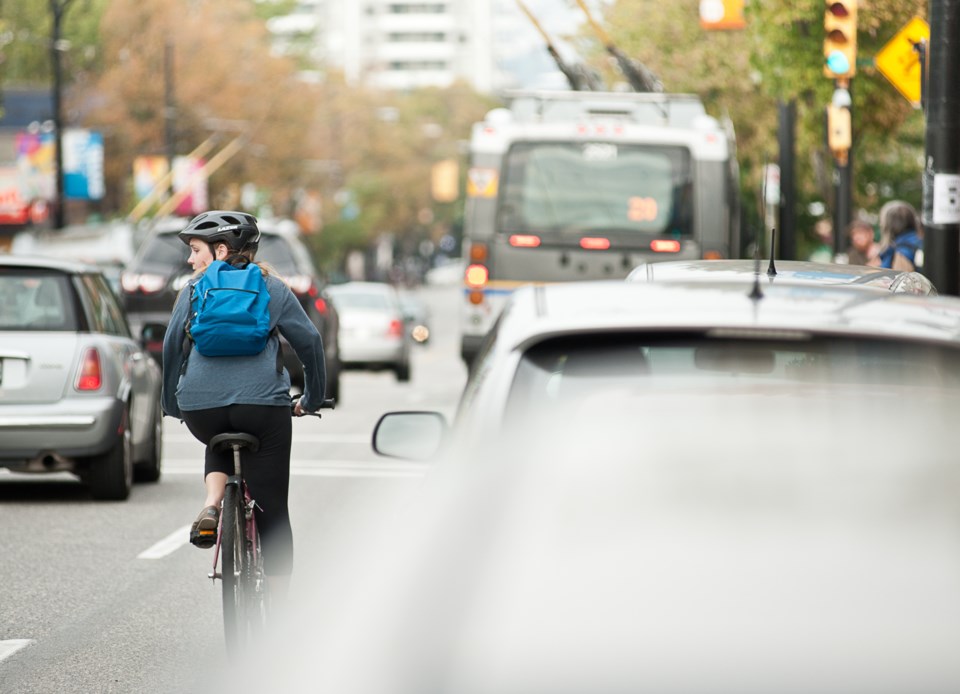Cycling advocacy group HUB wants to see better bike infrastructure along Commercial Drive, but some business owners in the area aren't convinced.
While East Vancouver is home to a number of residential bike routes, there is little access to businesses in areas like Commercial Drive, says Erin O'Melinn, executive director of HUB (formerly the Vancouver Area Cycling Coalition).
Currently, the closest streets with bike lanes running parallel to Commercial Drive are two blocks west on Woodland and four blocks east on Lakewood. There are few east-west connections, as well: Adanac and East 10th – nearly 20 blocks apart – are the only bike routes that come close to intersecting with the popular shopping district.
"It's difficult to access," said O'Melinn. And due to heavy traffic and narrow sections of pavement, Commercial Drive can be a dangerous place to cycle.
HUB is advocating for the addition of separated lanes to Commercial Drive to provide cyclists with safe, easy access to local businesses.
According to O'Melinn, 10 per cent of residents in the Commercial Drive neighbourhood currently rely on their bikes as their primary source of transportation.
"And this is in a neighbourhood without bike infrastructure," she said.
Business owners in the area aren't convinced, however.
Nick Pogor is the executive director of Commercial Drive Business Improvement Association, and he says any bike lane options that displace parking spots would hurt businesses.
"We're all for bikes and alternative modes of transportation, but businesses along the street need parking, on both side of the street," he said. "I think it would really change the character of the street in a negative way, because the mom-and-pop stores wouldn't survive."
Pogor said the BIA would interested in placing bike lanes on side streets that are closer to Commercial than the current options.
However, separated bike lanes may actually improve business, HUB contends.
According to O'Melinn, a recent study conducted along the busy Toronto shopping district of Bloor Street found that merchants vastly overestimated how many of their customers use cars. Meanwhile, studies done in Seattle and New York have suggested bike lanes there have had a positive effect on business.
"The impact is almost always positive when bike infrastructure is placed on commercial streets," said O'Melinn. "A parking spot [accommodates] just one customer, but a bike rack is 10 people."
With a review of the Grandview-Woodlands Community Plan currently taking place, O'Melinn is hopeful the City of Vancouver will see fit to consider adding cycling infrastructure to the Commercial Drive corridor. She says some businesses she's talked to in the area support separated bike lanes, including a number of the coffee shops.
"But any change is hard," says O'Melinn.



